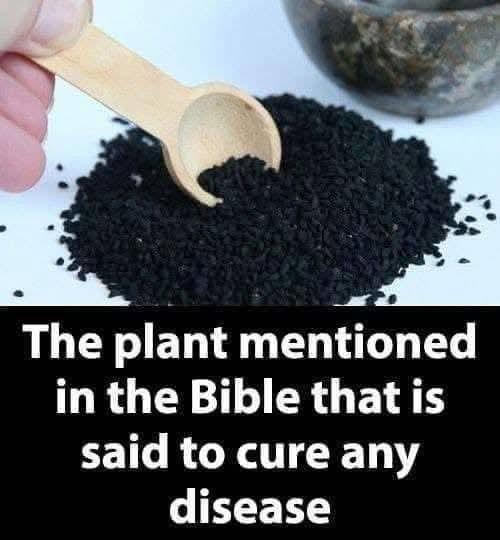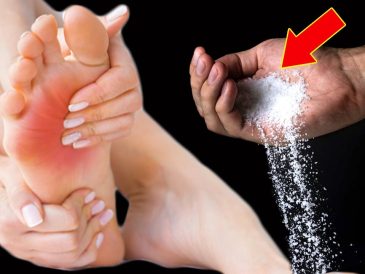Herbs have always held a place of reverence in human history, not only for their culinary use but also for their medicinal properties. Throughout history, cultures have harnessed the natural healing powers of plants, many of which have been mentioned in religious texts, folklore, and medical practices. One herb that has endured through centuries for its powerful medicinal properties is myrrh—a resin obtained from the Commiphora tree. Its long history of use dates back to ancient times, particularly in the Bible, where it is mentioned multiple times for its anointing, medicinal, and spiritual significance.
Myrrh in the Bible: A Sacred Herb
Myrrh, derived from the resin of the Commiphora myrrha tree, has been a valuable commodity for thousands of years. The plant is native to the Arabian Peninsula and parts of Africa, where it thrives in dry, mountainous regions. Its resin is harvested by making incisions in the bark of the tree, allowing it to ooze out and harden into a gum-like substance.
The significance of myrrh in the Bible cannot be overstated. Myrrh appears in numerous passages in both the Old and New Testaments, often as a symbol of anointing, purification, and even sacrifice. The most well-known biblical reference to myrrh occurs in the Nativity story of the New Testament. When the three wise men, or Magi, visited the newborn Jesus, they brought gifts of gold, frankincense, and myrrh. This choice of gifts is laden with meaning, as each item represented a key aspect of Jesus’ life and mission. Gold symbolized kingship, frankincense symbolized divinity, and myrrh foreshadowed the suffering and death of Jesus, as it was used in ancient times for embalming.
Beyond its appearance in the Nativity story, myrrh also played a significant role in the Old Testament. It was used as a key ingredient in the holy anointing oil prescribed in the book of Exodus, specifically in Exodus 30:23-25, where it is mixed with other aromatic spices to create a sacred, fragrant oil. This oil was used by priests in the Tabernacle for ceremonial purposes, including anointing sacred objects and people. In addition to its spiritual significance, myrrh was considered an important component in the preservation of sacred places and offerings.
Throughout the Bible, myrrh also serves as a symbol of purification and sacrifice. It was used in the preparation of incense for worship, and it also had medicinal purposes in ancient times, making it a holistic and multifaceted herb. While its spiritual symbolism is profound, it was the medicinal properties of myrrh that would continue to captivate and benefit human health for centuries.
Medicinal Properties of Myrrh
The use of myrrh in medicine dates back to the ancient Egyptians, who employed it for its antiseptic, anti-inflammatory, and pain-relieving properties. The ancient Egyptians also used it in embalming, believing it helped preserve the body after death. Myrrh’s medicinal reputation continued in the Greco-Roman world, where it was used to treat a variety of ailments, from digestive issues to respiratory infections. Even the famous physician Hippocrates is said to have used myrrh as part of his medicinal practices.
1. Antimicrobial and Antiseptic Properties
One of the key medicinal benefits of myrrh is its antimicrobial action. Studies have shown that myrrh contains compounds such as terpenoids, which are known for their ability to fight bacteria, fungi, and viruses. This makes myrrh an excellent natural remedy for wound care, skin infections, and oral health. Historically, myrrh was used to clean and disinfect wounds, and it was even included in certain ancient mouthwashes for its ability to kill harmful bacteria and promote oral hygiene.
In the Bible, myrrh’s role in healing and purification aligns with its modern-day use as a disinfectant. Whether applied topically or used in mouthwashes, myrrh has remained a valuable herb for its ability to fight off harmful microorganisms that can cause infection and disease.
2. Anti-Inflammatory and Pain-Relieving Effects
Myrrh has also gained recognition for its anti-inflammatory properties, which make it beneficial for individuals suffering from arthritis, joint pain, and other inflammatory conditions. The resin contains compounds like curzerene and commiphora wightii, both of which have been shown to reduce inflammation in the body. In traditional medicine, myrrh has been used to ease the pain associated with rheumatism and osteoarthritis, conditions that cause inflammation in the joints.
Additionally, myrrh’s ability to act as a natural analgesic makes it helpful for treating muscle aches, headaches, and other types of pain. Its application in pain management goes hand in hand with its biblical use as a symbol of healing and restoration. The therapeutic effects of myrrh can be felt both internally and externally, making it a versatile and valuable tool in modern medicine.
3. Respiratory Health
Myrrh has long been utilized to treat respiratory issues such as coughs, colds, asthma, and bronchitis. Its expectorant properties help loosen mucus and phlegm in the lungs, making it easier to expel. This makes it a natural remedy for chest congestion and sinus infections. Furthermore, myrrh’s soothing effect on the respiratory tract can help reduce inflammation in the airways, providing relief for individuals suffering from asthma or chronic bronchitis.
In the context of ancient healing practices, myrrh was often burned as incense to purify the air and promote a healthy environment. In modern herbal medicine, myrrh continues to be used in the form of tinctures, oils, and teas to help clear the respiratory system and ease breathing difficulties.
4. Digestive Health
Myrrh is also beneficial for digestive health, and it has been traditionally used to treat stomach ulcers, gastritis, and digestive discomfort. It promotes the secretion of bile, which helps with the digestion of fats. Myrrh’s antimicrobial properties also help prevent infections in the digestive system. In ancient medicine, it was often used to treat indigestion, nausea, and intestinal parasites.
Today, myrrh is still used to soothe the stomach lining, reduce bloating, and aid in the treatment of conditions like irritable bowel syndrome (IBS). Its antioxidant content also supports overall gut health, protecting against oxidative stress that can damage the digestive tract.
5. Skin Care and Anti-Aging
One of the most exciting areas of myrrh’s use in modern health is its application in skin care. Myrrh has natural anti-aging properties, largely due to its antioxidants, which help protect the skin from the harmful effects of free radicals. Free radicals are unstable molecules that can cause premature skin aging and damage to skin cells. The use of myrrh in anti-aging creams, serums, and masks is gaining popularity, as it promotes skin regeneration and improves the elasticity and firmness of the skin.
Additionally, myrrh is a popular ingredient in moisturizers and balms due to its healing properties. It is known to help reduce scars, soothe dry skin, and promote the healing of minor cuts and wounds. Its anti-inflammatory effects also help treat conditions like eczema and psoriasis.
Myrrh in Modern Health: A Rebirth of Ancient Wisdom
Today, myrrh is no longer confined to religious texts or ancient rituals. It is gaining recognition in the modern wellness industry for its incredible range of health benefits. From essential oils to herbal supplements, myrrh is being used in a variety of forms to promote well-being. As we continue to look for natural remedies in the modern world, myrrh offers a profound connection to the past while delivering tangible, scientifically-backed health benefits.
As research into myrrh’s medicinal properties expands, its potential applications continue to grow. Whether used for its antioxidant benefits, anti-inflammatory effects, or immune-boosting properties, myrrh remains a powerful herb in both ancient and contemporary medicine. Its role in biblical history as a symbol of healing continues to resonate today, providing both physical and spiritual nourishment.
Conclusion
Myrrh is much more than a symbol of spiritual purity and sacrifice in biblical texts. Its medicinal properties have been long recognized and valued, with its healing power continuing to benefit human health today. From its antimicrobial and anti-inflammatory properties to its use in respiratory health, digestive support, and skin care, myrrh’s diverse range of benefits makes it a truly remarkable herb. As we continue to rediscover the power of plants for healing, myrrh stands as a testament to the wisdom of ancient traditions and their enduring relevance in the modern world.





